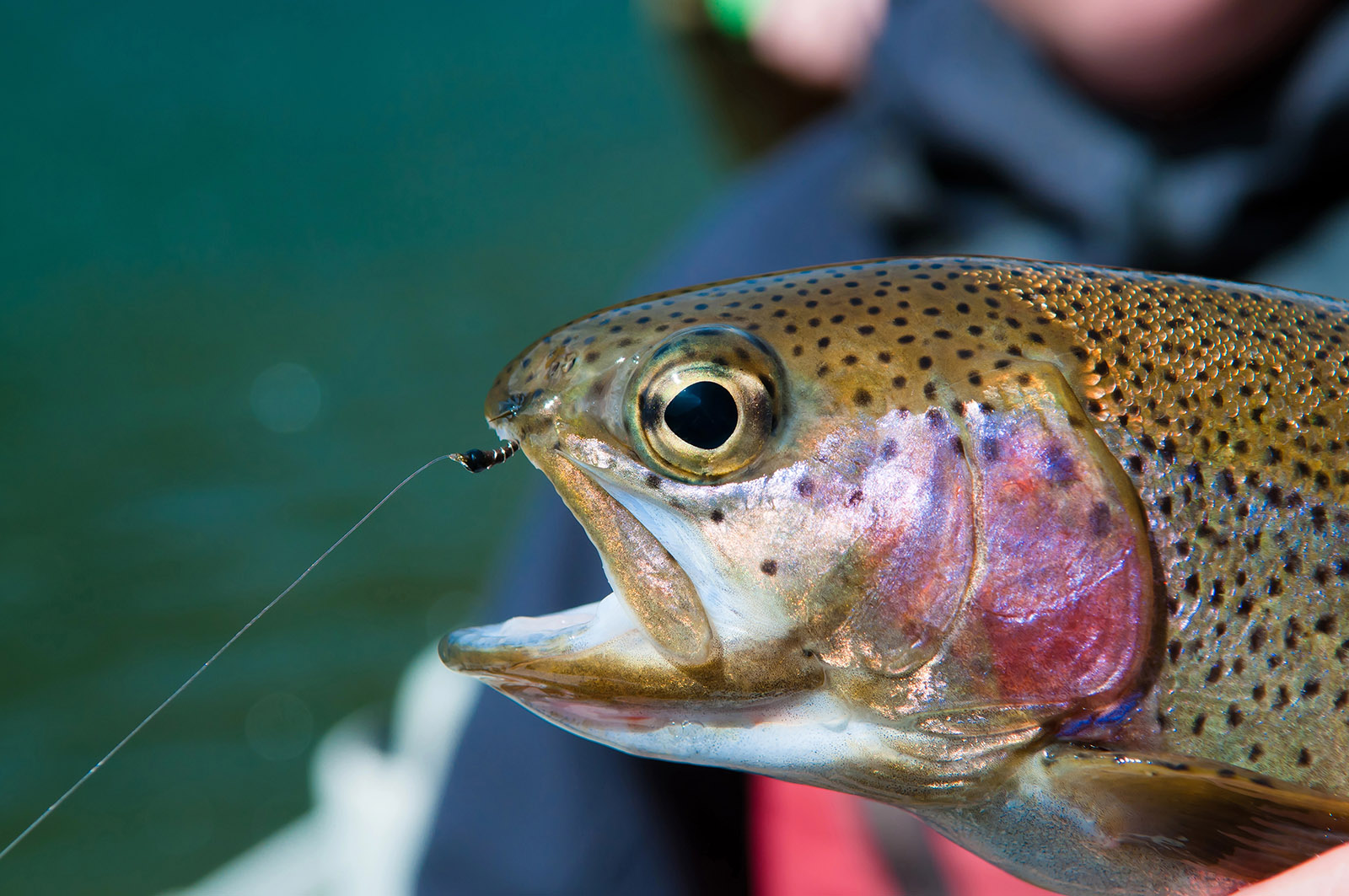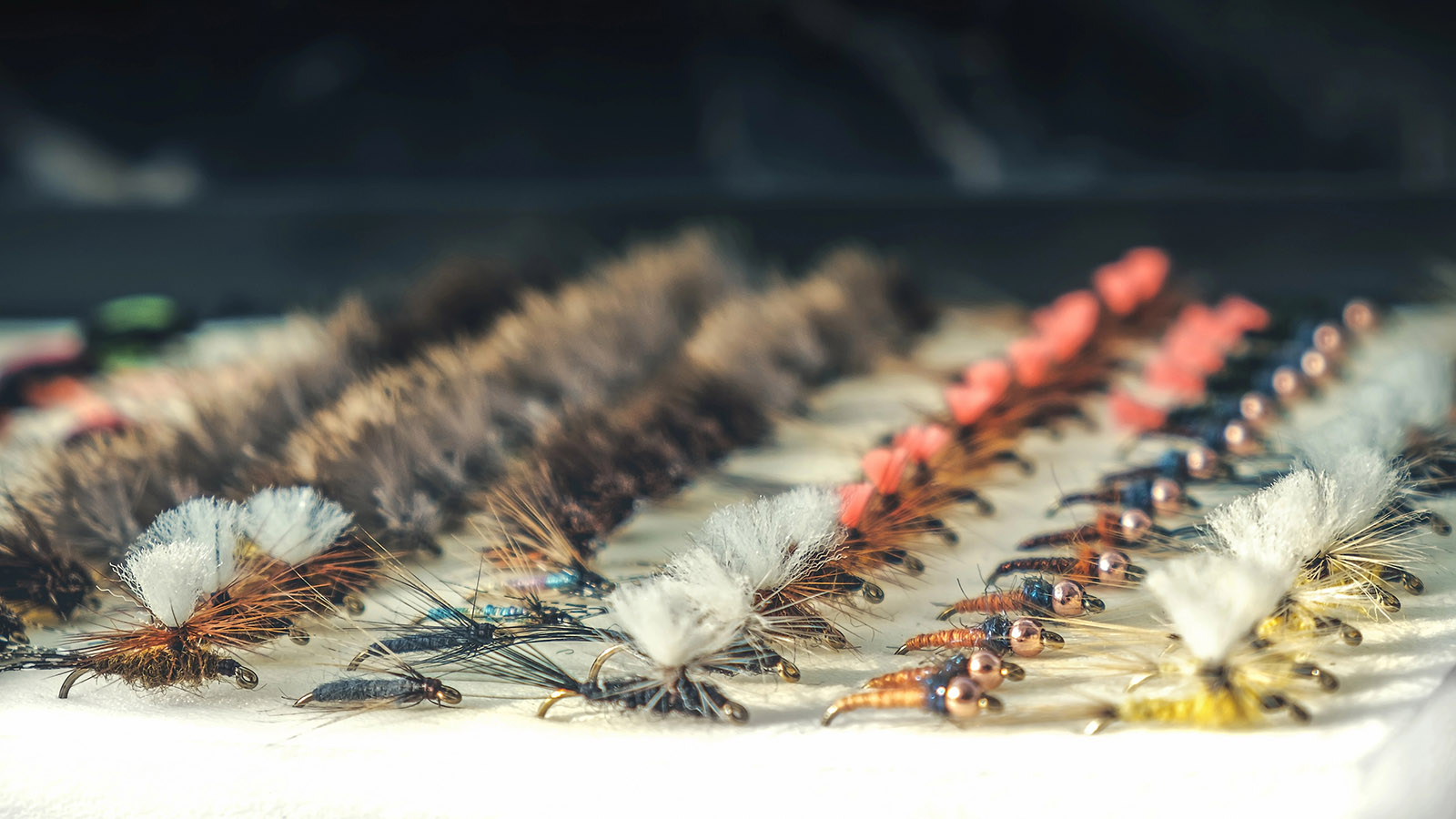A Smidge of Midge

by Jack Ballard
Fishing with a winter angler’s best friend.
Montana river hatch charts are full of bugs with the word “fly” in their name—stoneflies, caddisflies, mayflies, etc. But these names are misleading as most of them are aquatic insects from other orders.
However, real flies are also represented, with one family exuding importance for winter anglers: midges. Tiny, true flies of the Chironomidae family, midges comprise a notable portion of a trout’s diet in many locations, especially in rivers that flow below dams. In such tailwaters, midges can account for over half of the average trout’s diet, as they are abundant during temporal stretches—late fall to early spring—when other bugs are not. Midges also inhabit free-flowing streams like the Gallatin River, where they are readily consumed by trout. In fact, you can generally find midges wherever there’s water of any kind.

Fly anglers with minimal experience usually avoid fishing midges. The flies are tiny, and it doesn’t make sense that a five-pound brown would bother to eat such a miniscule meal. Size 20 flies are on the larger size for nymphs. A #16 Griffith’s gnat, which mimics a midge cluster, is a “monster” dry fly. Nonetheless, midges are probably the most staple patterns for winter fly fishing.
Midge hatches usually occur midday and frequently draw pods of rainbow and brown trout to the surface.
Flies mimicking midge larva should be fished very close to the bottom of the stream because that’s where they naturally occur. Winter trout typically take midge nymphs softly. Rather than the common plastic-bubble indicator, many guides recommend using a yarn strike indicator as it’s more sensitive to subtle takes. Basic, proven patterns, like a red or black #22 zebra midge, are perfect for winter fishing. Others include the WD-40, the disco midge, and the Brassie.
Once fish transition to feeding on hatching adults, fly anglers are set to experience a relatively rare delight: dry fly fishing when snowbanks line the trout stream. Midge hatches usually occur midday and frequently draw pods of rainbow and brown trout to the surface.
A variety of common dry flies work well during midge hatches. Basic black midges in sizes 20-24 are a great option. A small parachute Adams is another standard, which like the Griffith’s gnat represents a cluster of adult midges.
Sure, they’re little critters. But in the dead of winter all you need to hook a trout is a smidge of midge.
Keeping an eye on your own tiny fly in a midge swarm is sometimes the most difficult part of the fishing. Flies tied with a bit of bright color on top are easier to see than the drab hues of the fly body. It’s also possible to cast a two-fly rig, with a larger, brightly colored fly tied about a foot above the actual midge imitation. Even if the angler still can’t spot his or her midge fly, it’s possible to set the hook whenever a rise occurs near the “spotter” fly. If all else fails, raise the rod tip every time a rise is seen at the estimated location of your fly.
Light tackle works very well for fishing midges, on or below the surface. 4- or 5-weight rods are sufficient. Tippets in the 5x to 7x range are standard for midge fishing. A couple of tricks make handling those midget-sized flies much easier. Plucking a #22 fly from your box is easier with hemostats than fingers. If you require reading glasses, purchase a stronger set for tying tippet to tiny flies. Anglers who don’t normally require reading glasses often find low-magnification lenses helpful.
Sure, they’re little critters. But in the dead of winter all you need to hook a trout is a smidge of midge.
